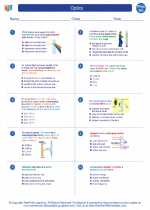Radio Telescope
A radio telescope is a specialized astronomical instrument designed to receive and study radio waves emitted by celestial objects. These telescopes are essential for observing phenomena that emit radio waves, such as pulsars, quasars, and galaxies. They are also used to study the cosmic microwave background radiation, which is a key piece of evidence supporting the Big Bang theory.
How Radio Telescopes Work
Radio telescopes collect and amplify radio waves from space using a large parabolic dish or an array of smaller dishes. The collected radio waves are then converted into electrical signals, which are processed and analyzed by astronomers to produce images and data about the radio-emitting sources in space.
Key Components of a Radio Telescope
1. Parabolic Dish: This is the primary collecting surface of the telescope, designed to focus incoming radio waves onto a receiver or antenna.
2. Receiver: The receiver captures the radio waves and converts them into electrical signals, which are then amplified and processed for analysis.
3. Antenna: In some designs, an antenna is used to capture the radio waves and transmit them to the receiver for processing.
4. Data Processing System: This system includes computers and software that analyze the incoming signals, produce images, and extract scientific data from the observations.
Types of Radio Telescopes
1. Single-Dish Telescopes: These telescopes use a single large parabolic dish to collect and focus radio waves. They are often used for mapping large areas of the sky and for studying individual radio sources.
2. Interferometric Arrays: These telescopes consist of multiple smaller dishes or antennas that work together to simulate the performance of a much larger telescope. They are used for high-resolution imaging and studying fine details of radio sources.
Challenges and Advantages of Radio Astronomy
Radio astronomy faces challenges such as interference from human-made radio signals and atmospheric disturbances. However, it offers several advantages, including the ability to observe celestial objects and phenomena that are not visible in other parts of the electromagnetic spectrum.
Study Guide
When studying radio telescopes, it's important to understand the following concepts:
- Explain how a parabolic dish collects and focuses radio waves.
- Describe the process of converting radio waves into electrical signals in a radio telescope.
- Discuss the advantages and limitations of single-dish telescopes versus interferometric arrays.
- Examine the impact of interference and atmospheric disturbances on radio astronomy observations.
- Identify and explain the significance of key discoveries made using radio telescopes, such as the detection of pulsars and the cosmic microwave background radiation.
Additionally, students should familiarize themselves with the history of radio astronomy, notable radio telescopes around the world, and the contributions of prominent radio astronomers to the field.
By mastering these concepts and topics, students can develop a comprehensive understanding of radio telescopes and their significance in the study of the universe.
.


